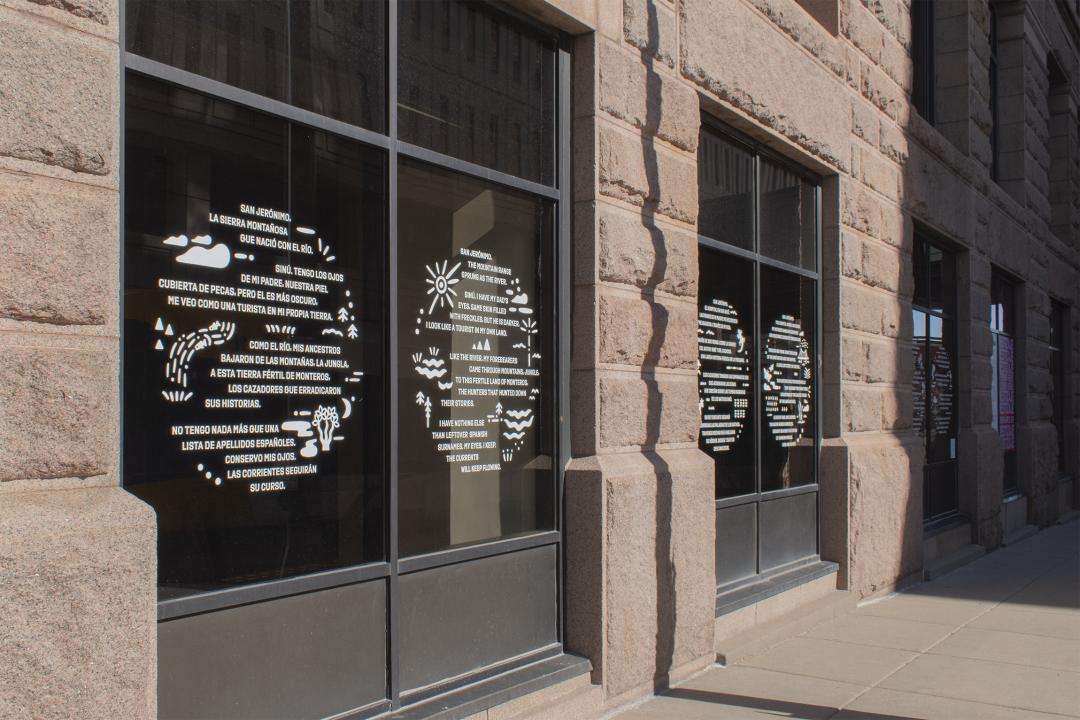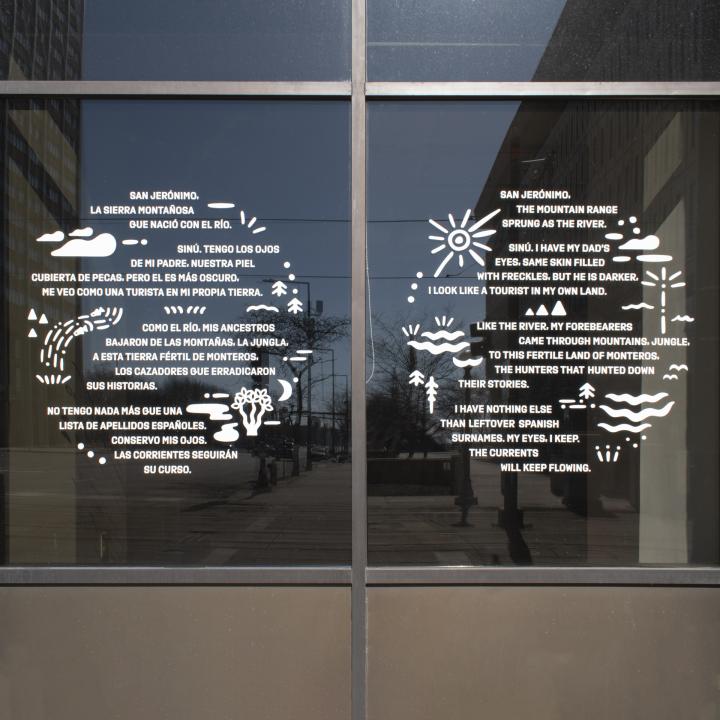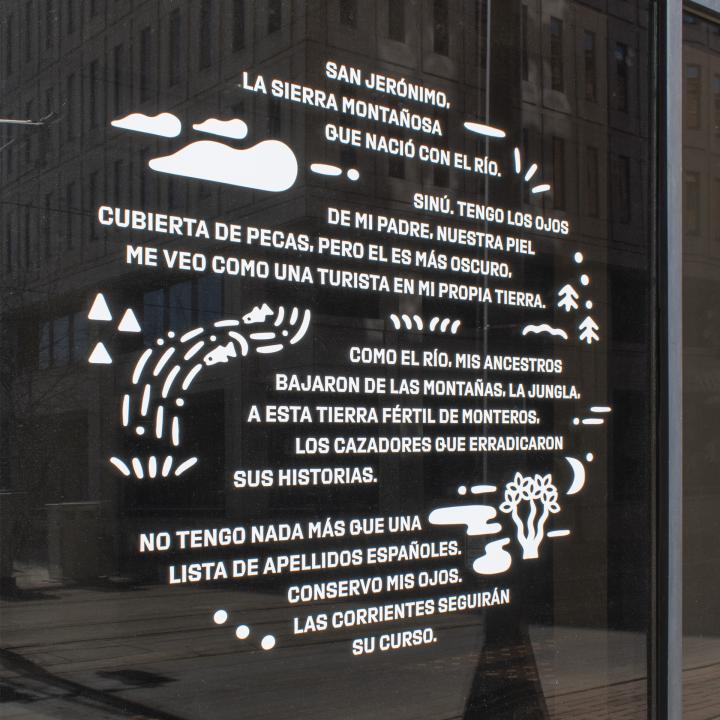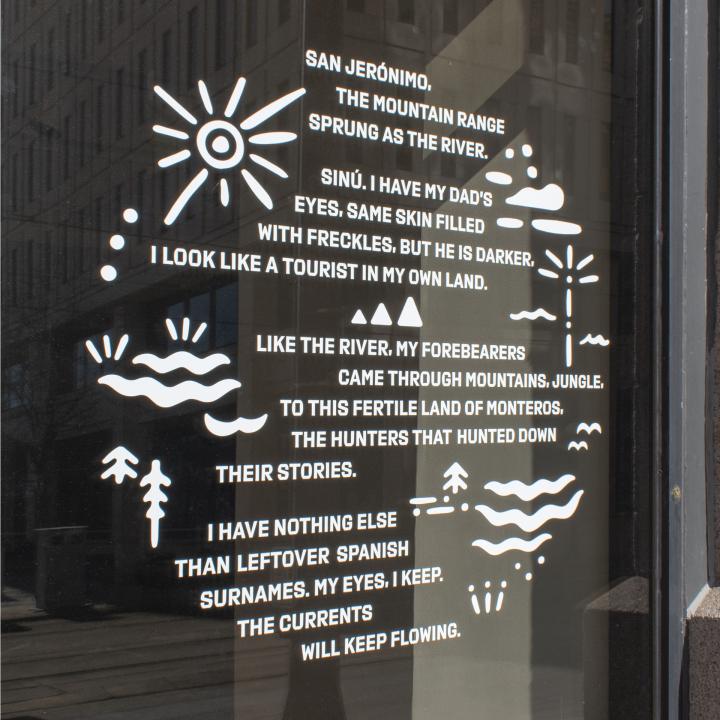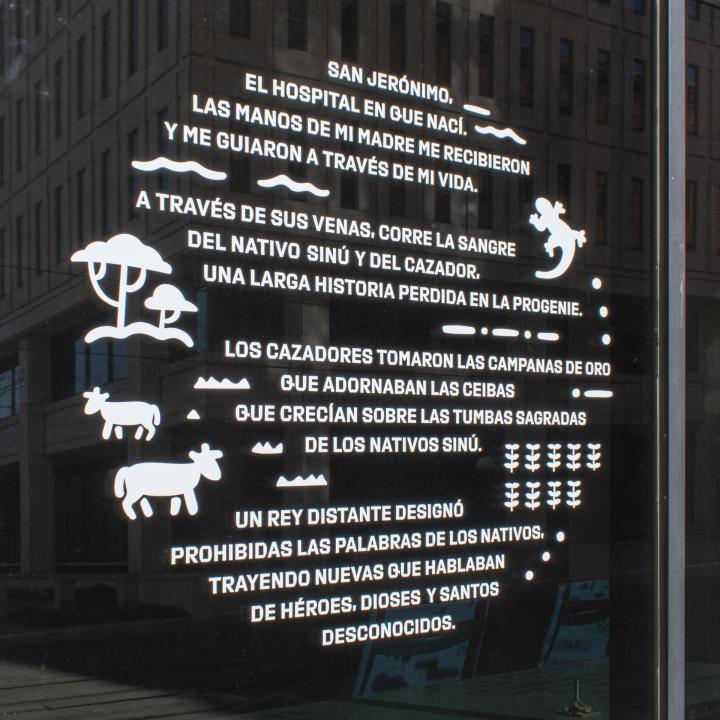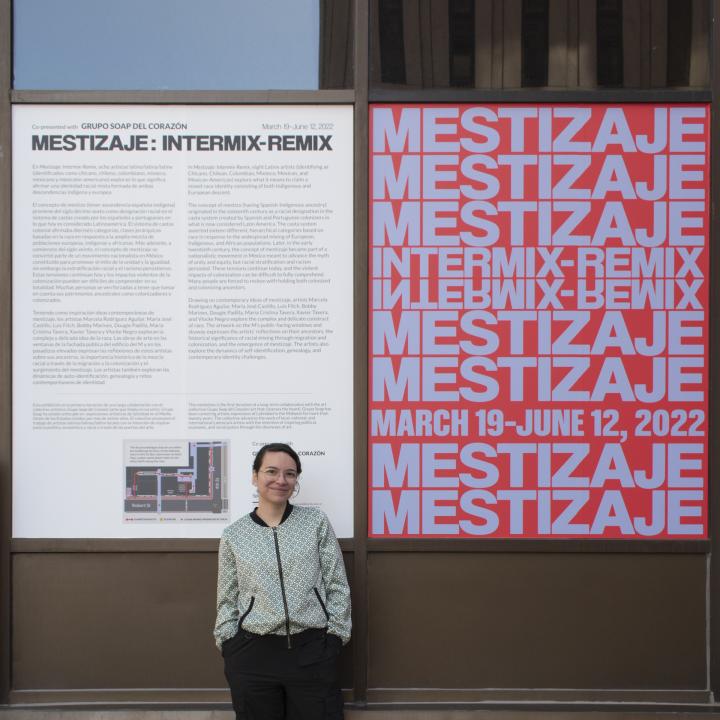In the visual poem El Río Sinú / The River Sinú, I reflect on my cultural background as a mestizo with ethnic origins rooted in historical conflict.
Through interviews with my family members, I collected information about my ancestors and contemporaries who have lived in the Sinú Valley in Colombia. These conversations shed light on my ancestors’ relationship to the land—as farmers and cattle ranchers, mostly—and their genealogy.
The poems feature my family’s history and migrational movements and demonstrate ways the Spanish conquest altered the social and natural landscapes. As part of this conquest, Indigenous stories, language, and culture were erased, a reality that continues today and makes it challenging to grasp the rich history and legacy of Indigenous people in its entirety.
With this poem, I aim to change the narrative by positioning the reader in the place of the conquered instead of the conqueror—a position not usually prominent in history books.
The Zenú or Sinú people’s ancestral lands include the valleys of the Sinú and San Jorge rivers and the coast of the Caribbean around the Gulf of Morrosquillo—modern-day areas of Córdoba and Sucre. With a rich history before colonization spanning from 150 BCE to 1600 CE, today, there are an estimated 300,000 Sinú people in Colombia.
Read more about the Mestizje, Intermix / Remix exhibition by clicking here.

